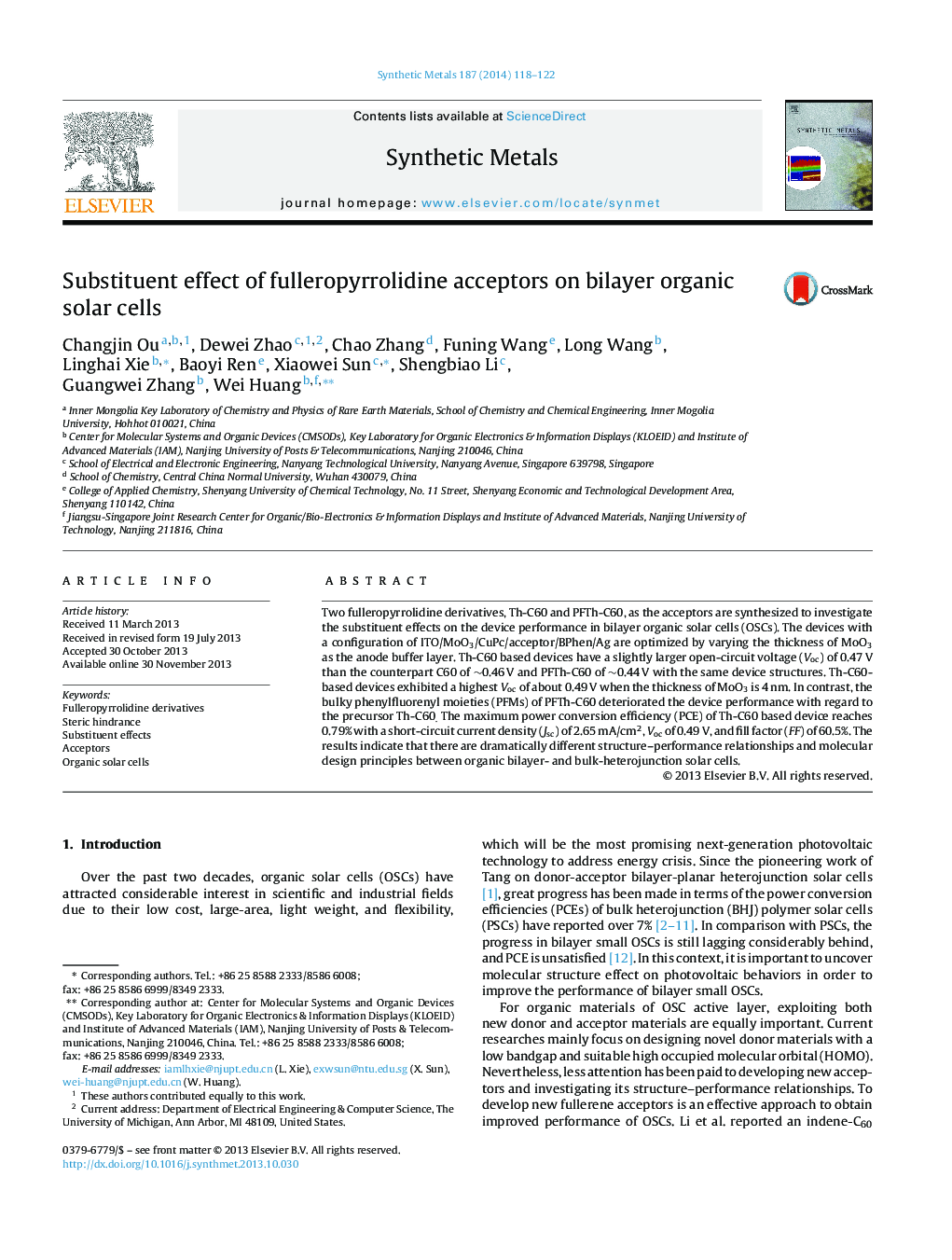| Article ID | Journal | Published Year | Pages | File Type |
|---|---|---|---|---|
| 1441138 | Synthetic Metals | 2014 | 5 Pages |
•Th-C60 based devices have a larger open-circuit voltage than that of PFTh-C60.•The highest power conversion efficiency of Th-C60 based device reaches 0.79%.•The phenylfluorenyl moieties of PFTh-C60 damage the device performance.•High chemical structure and device stability of PFTh-C60.
Two fulleropyrrolidine derivatives, Th-C60 and PFTh-C60, as the acceptors are synthesized to investigate the substituent effects on the device performance in bilayer organic solar cells (OSCs). The devices with a configuration of ITO/MoO3/CuPc/acceptor/BPhen/Ag are optimized by varying the thickness of MoO3 as the anode buffer layer. Th-C60 based devices have a slightly larger open-circuit voltage (Voc) of 0.47 V than the counterpart C60 of ∼0.46 V and PFTh-C60 of ∼0.44 V with the same device structures. Th-C60-based devices exhibited a highest Voc of about 0.49 V when the thickness of MoO3 is 4 nm. In contrast, the bulky phenylfluorenyl moieties (PFMs) of PFTh-C60 deteriorated the device performance with regard to the precursor Th-C60. The maximum power conversion efficiency (PCE) of Th-C60 based device reaches 0.79% with a short-circuit current density (Jsc) of 2.65 mA/cm2, Voc of 0.49 V, and fill factor (FF) of 60.5%. The results indicate that there are dramatically different structure–performance relationships and molecular design principles between organic bilayer- and bulk-heterojunction solar cells.
Graphical abstractFigure optionsDownload full-size imageDownload as PowerPoint slide
